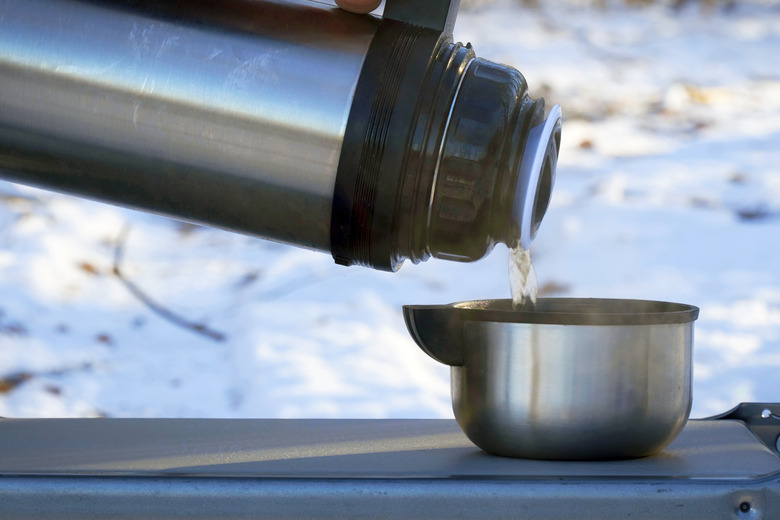How Is Air An Insulator?
We may receive a commission on purchases made from links.
Have you ever noticed that nothing happens when you disconnect circuit wires from an electrical device, such as a home receptacle, and then hold them apart and turn on the power? Electricity doesn't flow unless you bring the wires very close together (an inch or less), at which point, you'll get some major sparking. The reason this happens is because air is a good electrical insulator.
Try another experiment: Fill a glass with hot water, let it stand, and time how long it takes for the water to cool to room temperature. Then, repeat the experiment, this time surrounding the cup with bubble wrap, and you'll notice that it takes much longer for the temperature of the water to fall. This is because air is also a thermal insulator but only if it's confined within cells that prevent it from transferring heat by convection. This is the idea behind most types of house insulation available on the market.
Tip
Air is a good electrical and thermal insulator because its molecules are far apart. Air does transmit heat by convection, but you can prevent that by confining it in cells to prevent it from moving.
Air as an Electrical Insulator
Air as an Electrical Insulator
The reason air is a good electrical insulator is the same reason it's a good thermal insulator: Air molecules are too far apart to conduct energy efficiently. In terms of electrical applications, air has low conductance, which in the SI measurement system is measured in seimens per meter (S/m). The two best conductors (and the worst insulators) are copper and silver, each having a conductance around 6 X 107 S/m. Air, on the other hand, has a conductance around 3 X 10-15 S/m, which is different by a factor of 1022, which is 10 with 22 zeros after it.
It's a good thing air is such an excellent electrical insulator, or lightning strikes would be far more frequent, and electricity would jump between electrical terminals freely unless they were protected by some other type of insulation. Air isn't a perfect insulator, though, because if it were, lightning wouldn't happen at all, and clouds would become so highly charged that planes flying into them would become electrified, and everyone inside them would be electrocuted.
Air as a Thermal Insulator
Air as a Thermal Insulator
Thermal energy can be transmitted in one of three ways: conduction, convection, and radiation. Air isn't a good heat conductor by virtue of the spacing of its molecules, but it doesn't prevent the transmission of radiant heat. If it did, no one on Earth would ever be warmed by the sun. It also conducts heat by convection. Warm air near a heat source becomes lighter (because the molecules become more diffuse), and it rises to be replaced by cooler air, and this natural movement allows the heat to travel away from the source.
There's one way to prevent heat loss by convection, and that's to confine the air in discrete cells so that it can't move. That's the reason bubble wrap keeps water in cups and glasses warm for a longer period, and it is the principle employed in fabrics designed to keep you warm as well as in building insulation.
Using Air to Insulate Buildings
Using Air to Insulate Buildings
If builders just left wall cavities empty, buildings wouldn't stay warm because air in the wall cavities would be free to conduct heat by convection from the inside wall to the outside, and all the heat would be quickly lost. Instead, most types of building insulation trap air in cells and prevent convection, thus taking advantage of air's poor heat conductivity.
Two of the most efficient insulation materials are foam (spray foam and rigid foam) and fiberglass batts, and they both work the same way. Foam consists of countless tiny air pockets that are created when the material expands from its original liquid form, and fiberglass is a loose, fibrous material that creates pockets of air that are separate from each other. Blown-in cellulose and rock wool insulation work in the same way, but they are denser and have less air, so you typically need thicker barriers to get the same insulation value.
